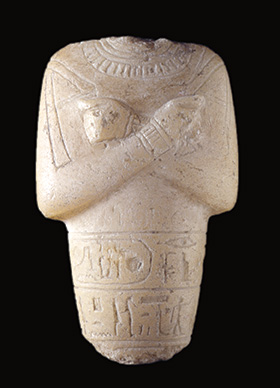New Kingdom Rulers
- Neolithic Period: 4500-3000 BCE
- Early Dynastic: 3000-2650 BCE
- Old Kingdom: 2650-2150 BCE
- 1st Intermediate Period: 2150-2040 BCE
- Middle Kingdom: 2040-1640 BCE
- 2nd Intermediate Period: 1640-1550 BCE
- New Kingdom: 1550-1070 BCE
- - Architects: Amenhotep, Son of Hapu
- - Architects: Senenmut
- - Rulers: Amenhotep III
- - Rulers: Amenhotep IV
- - Rulers: Hatshepsut
- - Rulers: Ramses II
- - Rulers: Ramses III
- - Rulers: Thutmose III
- - Rulers: Tutankhamun
- - Monuments: Abu-Simbel
- - Monuments: Abydos - The Temple of Seti
- - Monuments: Akhetaton (Tell el-Amarna)
- - Monuments: Amenhotep III’s Mortuary Complex
- - Monuments: Deir-el-Bahri
- - Monuments: Luxor Temple
- - Artifacts: Link to Collection Search
- 3rd Intermediate Period: 1070-712 BCE
- Saite and Late Periods: 712-332 BCE
- Greco-Roman Period: 332 BCE-642 CE
- Coptic Period: 395-642 CE
- Islamic Period and Modern Times: 642 CE-Today
- Neolithic Period: 4500-3000 BCE
- Early Dynastic: 3000-2650 BCE
- Old Kingdom: 2650-2150 BCE
- 1st Intermediate Period: 2150-2040 BCE
- Middle Kingdom: 2040-1640 BCE
- 2nd Intermediate Period: 1640-1550 BCE
- New Kingdom: 1550-1070 BCE
- - Architects: Amenhotep, Son of Hapu
- - Architects: Senenmut
- - Rulers: Amenhotep III
- - Rulers: Amenhotep IV
- - Rulers: Hatshepsut
- - Rulers: Ramses II
- - Rulers: Ramses III
- - Rulers: Thutmose III
- - Rulers: Tutankhamun
- - Monuments: Abu-Simbel
- - Monuments: Abydos - The Temple of Seti
- - Monuments: Akhetaton (Tell el-Amarna)
- - Monuments: Amenhotep III’s Mortuary Complex
- - Monuments: Deir-el-Bahri
- - Monuments: Luxor Temple
- - Artifacts: Link to Collection Search
- 3rd Intermediate Period: 1070-712 BCE
- Saite and Late Periods: 712-332 BCE
- Greco-Roman Period: 332 BCE-642 CE
- Coptic Period: 395-642 CE
- Islamic Period and Modern Times: 642 CE-Today
Ramses II
ca. 1303 BCE – 1213 BCE
Ramses II, commonly known as “Ramses the Great,” is one of the most famous pharaohs of Egypt. He was known to the ancient Egyptians as Userma’atre’setepenre, which means “Keeper of Harmony and Balance, Strong in Right, Elect of Ra.”
Ramses II ruled as the third pharaoh of the Ninteenth Dynasty. He reigned for sixty-eight years. He ruled for so long that nearly all of his subjects had been born knowing only him as their pharaoh, leading to some panic upon his death that the world would end. Ramses II, whose mummy showed he stood over six feet tall, had over 200 wives and concubines and 156 children.
Ramses II is viewed as a great warrior, fighting many battles. His reputation as a warrior was enhanced by the Battle of Kadesh against the Hittites. According to Ramses II, the Battle of Kadesh was a victory for he defeated his enemy. However, the king of the Hittites, Muwatalli II, claimed the Hittites won. While it seems the outcome of the Battle of Kadesh was controversial, the battle did lead to Ramses II and Hattusili III, successor of Muwatalli II, signing the first known peace treaty in the world.
Ramses II constructed the temples at Abu Simbel, the hall at Karnak, the complex at Abydos, the Ramesseum (tomb complex) at Thebes, and hundreds of other buildings, monuments, and temples. Many historians consider his reign the pinnacle of Egyptian art and culture. The well-known tomb of Nefertari (his first wife and favorite queen) is still stunning today, thousands of years later.

Image: RC 2223 Shabti of Ramses II at the Rosicrucian Egyptian Museum.
https://news.nationalgeographic.com/2018/01/colossus-ramses-statue-move-cairo-egypt-museum/

